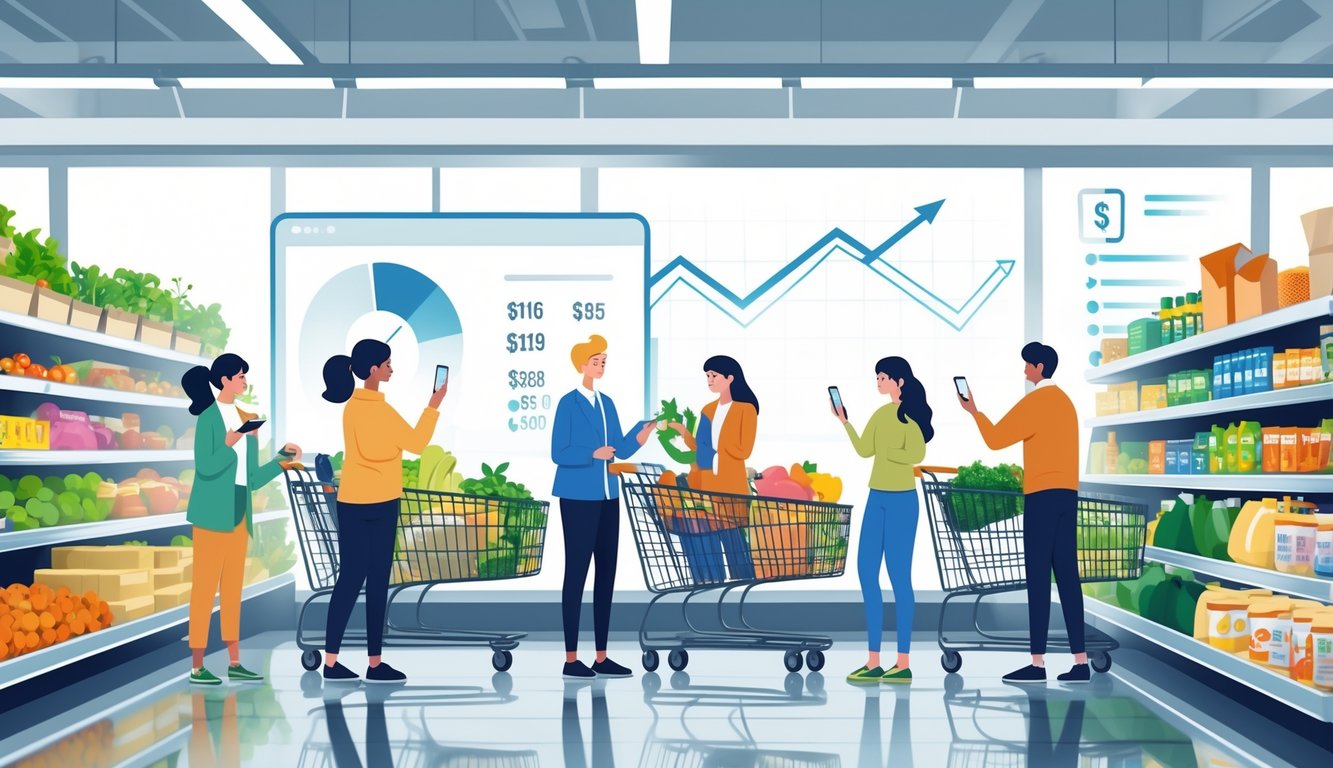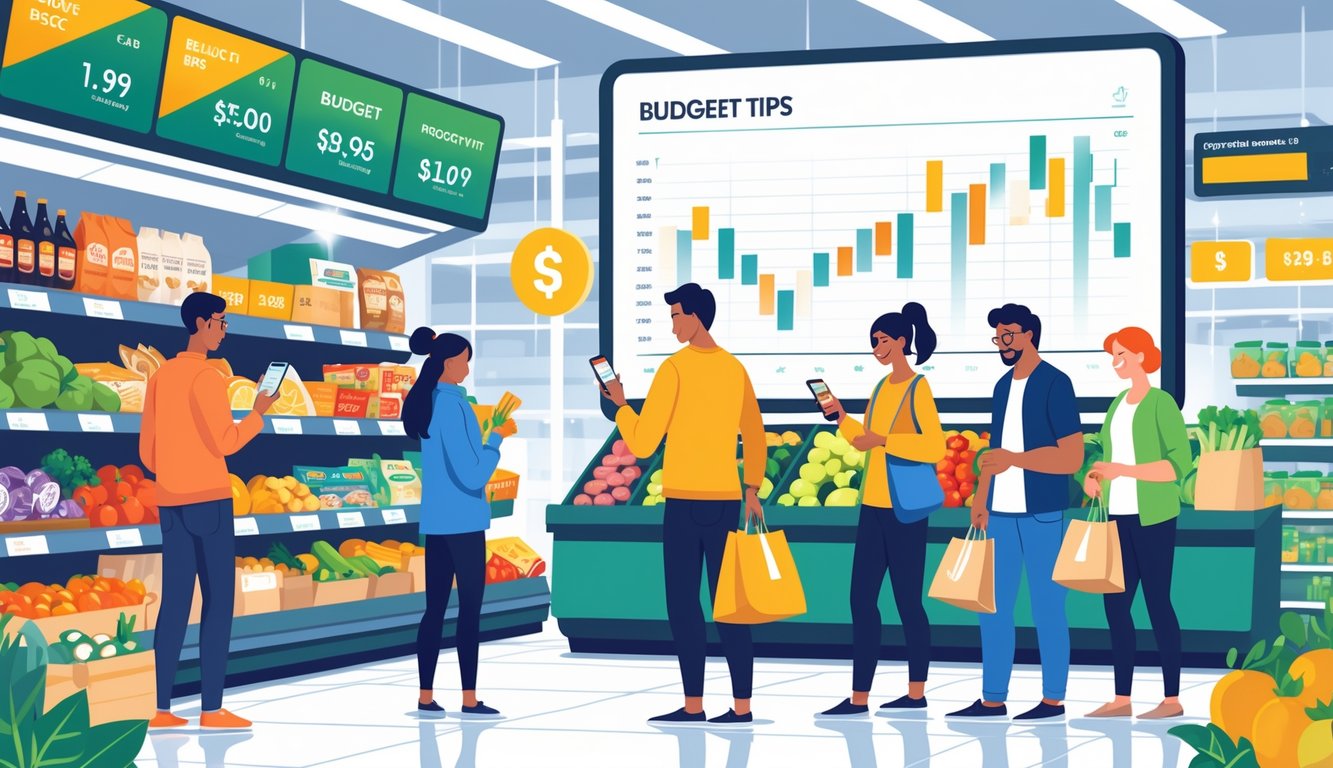
So here’s what’s bonkers: I’m halfway through the cereal aisle, juggling a podcast, and suddenly the host blurts out, “Invest your grocery money like index funds.” Wait, what? Since when did grocery shopping start doubling as a crash course in finance? Supposedly, you can overhaul your grocery budget using investment tricks—like, without even giving up your weird brand-name peanut butter. Heard this story about a mom who sliced $75 off her weekly bill by dollar-cost averaging pantry basics. Not sure if that’s real or just internet legend, but honestly, why did it take this long for someone to say it out loud?
Meal planning apps are basically yelling at me—“Lock in your cash, stop tossing leftovers, compound your savings.” Some behavioral economist (don’t ask me who) claims tracking receipts in a spreadsheet makes you see waste as a sunk cost. Okay, cool, but who really saves receipts for more than a week? I mean, Gallup claims the average person trashes $1,500 in food every year. Imagine if that went into a Roth IRA instead. That’s just depressing.
Meanwhile, my brother—who’s way too into loyalty cards—figured out those points aren’t just dumb prizes. He’s convinced they’re like micro-returns if you actually time your shopping with discount cycles. Sounds exhausting, but he’s got the receipts (literally). I’ve started mashing together random finance blog tips with my growing distrust of grocery store “sales.” If you’ve ever left the store feeling like you just got mugged by the produce section, you’ll get why suddenly, this feels urgent. Avocados? Who even cares anymore.
Understanding Your Grocery Budget

Every time I think I’m finally nailing this grocery budget thing, something dumb happens—like, surprise, eggs cost double, or there’s a recall on the only cereal my kid eats, or suddenly I black out in the snack aisle. But here’s the one thing everyone from finance nerds to frazzled parents agrees on: winging it doesn’t work. Groceries are a moving target. If I don’t actually know what’s flying out of my account, I might as well just Venmo my money to the grocery store every Friday and call it a day.
Assessing Current Grocery Spending
So last month I’m like, “Sixty bucks for groceries, easy.” Spoiler: one random dinner recipe and that budget’s toast. The USDA says the average U.S. household drops about 11% of their disposable income on groceries (USDA, 2023). Feels fake every time I’m at the register. I tried saving every receipt—not obsessively, just enough to see that my “cheap” trips aren’t cheap, especially when I skip checking what’s already in the pantry.
A dietitian once told me, “If your grocery spending surprises you, you’re not tracking it right.” Made me laugh, but she’s dead on. Wilted spinach? Thrown out three times in one week. My biggest money leaks come from impulse grabs—iced coffee, new yogurt, those buy-one-get-one cookies I don’t even like. Some weeks $150 feels normal, others $90 feels like a splurge. There’s no pattern unless I line up old receipts or let some budgeting app split out groceries from, like, shampoo and dog treats.
Setting Realistic Financial Goals
First goal I ever set? “Spend Less Money.” Useless. Like writing “Eat Better” on a napkin and hoping for abs. If my goals aren’t specific—like “cut $20 a week by skipping pre-cut fruit” or “use that 40/30/30 ‘needs, wants, flex’ formula”—nothing changes. Grocery budgets have to fit real life, not fantasy willpower (I still can’t ignore bakery sales).
Funny thing? My best “wins” came when I stopped clinging to one number. I flex up or down—less when cash is tight, more if strawberries are suddenly cheap. That’s how I don’t lose my mind. CFP once told me, “Food spending only makes sense if you control your habits, not your hopes.” I started scribbling meal plans and staple lists on sticky notes stuffed in my wallet because, let’s be honest, app reminders vanish. Something always throws it off—holidays, sleepovers, random oatmeal cravings—but at least I see the chaos coming.
Tracking Weekly Grocery Expenses
I used to think tracking was for control freaks. Then I overdrafted my account after double-buying cheese. Now I’m a Google Sheets convert. Each week, new columns: Date, Store, Items, Total, Regret Buys, Smug Savings. Patterns jump out—shop hungry, regret buys spike. Not rocket science, but it works.
Someone at my credit union told me to match my grocery budget to my actual bank transactions every Saturday. I don’t scan eggs, but when I do the ritual, I spot mistakes faster. Sometimes I use an envelope for cash, with receipts jammed in for “audit day.” Even a dumb notebook, ranking snacks from “worth it” to “never again,” does more for my budget than any app I’ve tried.
Building a Smart Grocery Shopping List
Great, I scored bell peppers on sale. Pantry’s still empty. I’m always toggling between five list apps, wondering if off-brand yogurt is going to wreck my macros. My lists mutate—suddenly I’m buying stuff for recipes I’ll never cook, or impulse junk that’s embarrassing by the time I hit checkout.
Prioritizing Essential Items
My cart fills up with “essentials” but, let’s be real, half of it’s nonsense. I run a spreadsheet tied to my bank app (yeah, it’s a little much) because some finance blog screamed, “Check your basics before you shop!” Onions, rice, eggs, coffee, detergent—if we run out, it’s chaos.
Mixing pantry checks with meal plans (after poking through leftovers) saves money and fridge space. One time I chased a frozen waffle sale, forgot we already had five boxes at home. Never again.
Now I bullet out essentials: protein (chicken, turkey), carbs (bread, oats), greens (spinach, peas), and household stuff. If I stick to those, less food gets trashed, and there’s actually room for snacks I actually want.
Planning for Versatile Ingredients
Vegan cheese, pumpkin spice oatmeal, TikTok sauce kits—sure, I get tempted. But honestly, how often do I regret buying one-trick-pony ingredients? I want stuff that works everywhere. Eggs, shredded chicken, rice, carrots, canned tomatoes—they go in stir-fry, soup, weird breakfast bowls, whatever.
Saw some Forbes blurb about home cooks saving up to 30% by reusing one main ingredient. I kind of believe it. My rule: if it can’t go in two different meals, it’s off the list. (Unless I’m feeling wild and buy something seasonal.) I keep a “flex” column in my app—beans, tortillas, lemons. If one thing can stretch to another dinner, that’s a win.
Sometimes I cling to specialty stuff, swearing I’ll use it. It ends up behind the salsa, resurfacing months later when I finally clean out the pantry.
Avoiding Impulse Purchases
Impulse buys are the worst. Checkout lane is a trap every time. Fidelity’s blog told me to swear off “just-in-case” snacks and last-minute deals. I try. But then some weird sriracha-mustard hybrid calls my name and, well, here we are.
Amy Casey (chef, Instagram, you know the type) says check digital coupons first. Not bad advice. But honestly? Curbside pickup is my real hero—no register temptations, no “two for $3” protein bars sneaking in.
Still, even with all my hacks, if I’m hungry or rushed, some instant ramen always ends up in the cart. I guess no list can save me from myself.



